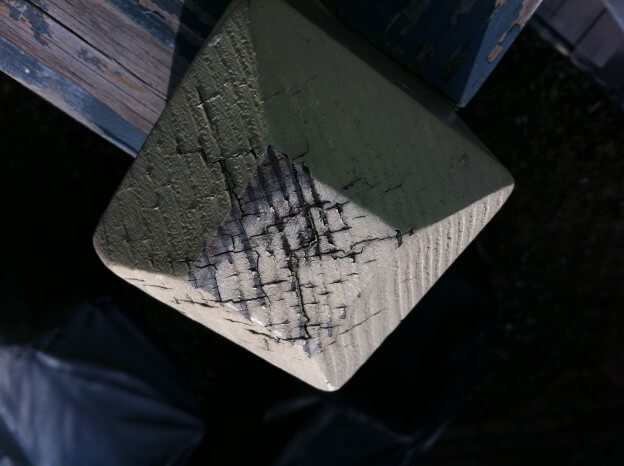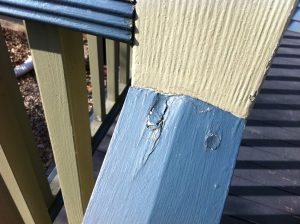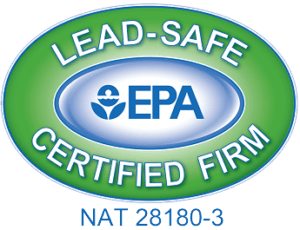I’m not sure why our craft is called painting when the vast majority of our time is spent preparing surfaces for paint. Invited to repaint the back deck of a gorgeously detailed home in Brookline, we find a paint failure common to newer construction. The wood in the photos below is fir, a soft wood harvested from massive plantations across the Pacific Northwest. I use the word plantation intentionally – old, slow growth fir is a beautiful durable wood; newer fir has been engineered to grow quickly for faster turnover of product. Consequently the grain of new fir is wider, the wood softer and so more prone to moisture uptake.
The image below, of the rot around the fastener, is easily remedied using wood-specific epoxy fillers. We’ll dig out the rot until we find solid wood then fill with epoxy, making this section of the rail bullet-proof.
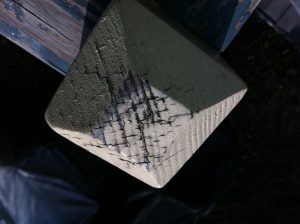 The end grain splitting visible in the image to the right is more difficult to manage– end grain acts as a sponge and needs to be carefully sealed. In this case we will scrape and sand off all the paint as well as 1/16” of the exposed wood to ensure the substrate is clean and sound. We’ll then saturate the end grain with an epoxy consolidant – this is a water-thin material that will seal the wood cells permanently. If the end grain appears coarse and unfinished, we’ll fill with the epoxy material in use on the rail, sand smooth and paint. Presto, a post that will last forever.
The end grain splitting visible in the image to the right is more difficult to manage– end grain acts as a sponge and needs to be carefully sealed. In this case we will scrape and sand off all the paint as well as 1/16” of the exposed wood to ensure the substrate is clean and sound. We’ll then saturate the end grain with an epoxy consolidant – this is a water-thin material that will seal the wood cells permanently. If the end grain appears coarse and unfinished, we’ll fill with the epoxy material in use on the rail, sand smooth and paint. Presto, a post that will last forever.
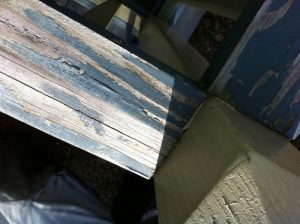 This final photo to the left shows delamination of the fir rail – in this case this section of railing is plain sawn, having been cut from the outer part of the tree – the grain is rounder, further apart and is easily degraded by ultraviolet light. As the lignin binding the cellulose breaks down, the layers begin to separate, or delaminate. We’ll aggressively sand this rail to remove all paint and surface wood until we have a sound substrate, flood with epoxy consolidant and then proceed to finish coats.
This final photo to the left shows delamination of the fir rail – in this case this section of railing is plain sawn, having been cut from the outer part of the tree – the grain is rounder, further apart and is easily degraded by ultraviolet light. As the lignin binding the cellulose breaks down, the layers begin to separate, or delaminate. We’ll aggressively sand this rail to remove all paint and surface wood until we have a sound substrate, flood with epoxy consolidant and then proceed to finish coats.
We’ll spend almost no time actually painting on this project. But that’s OK – we’re paint nerds, and we love our work. We invite you to learn more about our wood restoration services.

